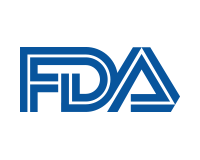United States Department of Health and Human Services

United States Food and Drug Administration: Publications
Date of this Version
2017
Document Type
Article
Citation
Journal of Food Safety 2017; 37: e12292.
Abstract
Nine different food products frequently associated with Bacillus cereus outbreaks were chosen as representative matrices to be evaluated with end-point polymerase chain reaction (PCR), enzyme linked immunosorbent assay, lateral flow device and mass spectrometry for detection of enterotoxins associated with human illness. Testing was performed on food portions inoculated with a bacterial strain and incubated at 30C for either 5 h or 24 h. A screening end-point multiplex PCR targeting enterotoxin genes including the emetic toxin and three diarrheal toxins, hemolytic hemolysin BL (Hbl), nonhemoltyic enterotoxin (Nhe), and cytolysin K. Commercially available kits were used to determine the presence/absence of Nhe and Hbl. Finally; a quantitative analysis using mass spectrometry was performed for the detection of the emetic toxin. Definitive results were available after a five hour pre-enrichment in five food products. The following strategy would allow for more efficient testing of surveillance or environmental samples as well as more rapid response time during a foodborne outbreak.
Included in
Dietetics and Clinical Nutrition Commons, Health and Medical Administration Commons, Health Services Administration Commons, Pharmaceutical Preparations Commons, Pharmacy Administration, Policy and Regulation Commons


Comments
U.S. government work.